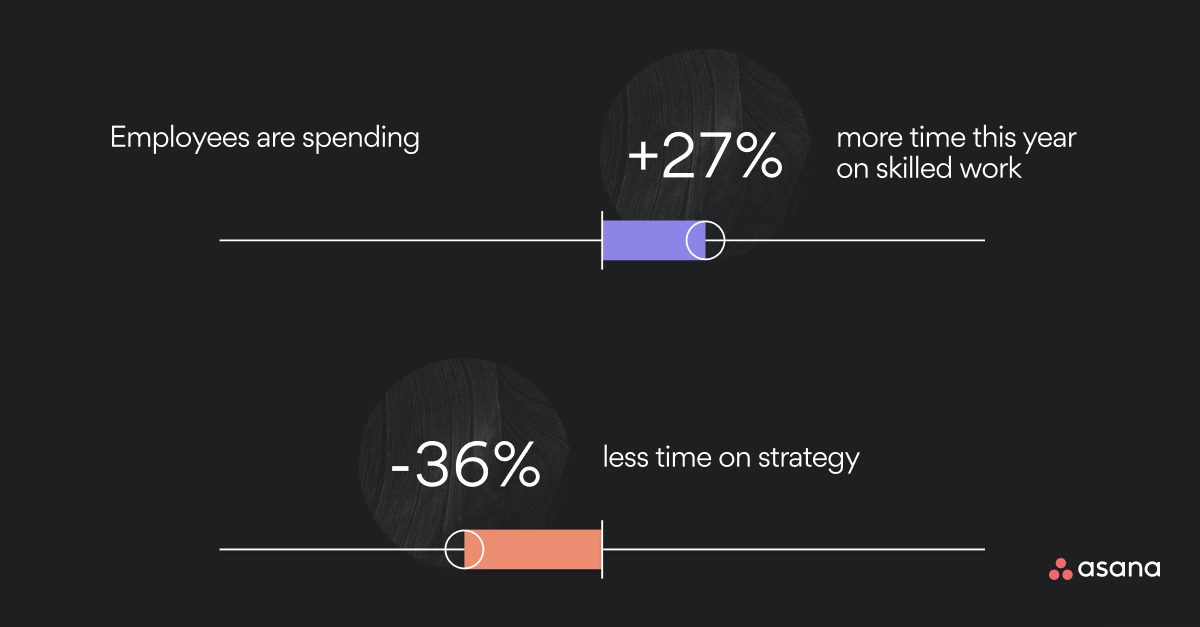They are also struggling to set boundaries at work.
Work life balance has been eroded by COVID-19.
Boundaries are getting blurred, and workers are overworking and suffering with burnout.
Learn how Asana recommends employers fix this situation.
Remote work has given employees across the world more power and flexibility than ever before. They are no longer wasting hours every day – this amounts to over 11,000 days over their whole career – commuting to the office; this time can be spent on more productive tasks, including errands, catching up on sleep, and exercising.
But flexible working can be tricky to navigate, and workers across the world are struggling to set boundaries at work and know what work to prioritize.
A study of more than 10,600 global workers by work management platform Asana found that 37% of workers don’t have a clear end to their working day – this rises to 53% for Generation Z.
They are also struggling to figure out what work to focus on, particularly when they are interrupted by constant email and message notifications, as well as lots of meetings.
Asana’s Autonomy Work Index 2022 found that workers waste six working weeks a year on duplicated admin work and unnecessary meetings.
58% of their days are lost to work coordination, rather than actual productive tasks; less than 10% of employees’ time is spent on strategy, which is significantly down from last year.

24% of workers believe that too many meetings caused them to miss deadlines. 42% are spending more time on email and 40% are in more video calls than last year.
This situation is creating extreme levels of burnout. While the general levels of burnout have declined from 71% in 2021 to 63% in 2022, this is still worryingly high given that the figure is 84% for Gen Z.
One in four workers told Asana they had experienced burnout more than four times in the past year, and 40% experience burnout and imposter syndrome together.
“The lines between work and life are blurrier than ever. Regardless of whether organizations choose an in-person, hybrid or fully remote model, a lack of clarity, coupled with increasing digital distractions, are continuing to fuel challenges for workers around the world,” notes the report.
So what must employers do to ensure their workers are as focused and productive as possible, without burning out?
First, stop over-meeting. Too many virtual meetings are exhausting, and, if they aren’t focused, then they can be a waste of time. 48% of workers told Asana that efficient meetings could drive productivity, and limit the number of notifications they get from colleagues.
But it goes beyond meetings, Asana calls on companies to generally rethink how they collaborate.
Don’t expect people to reply to messages immediately – currently, 56% of workers feel like they do so.This is particularly the case after hours – while some people may work unconventional hours because of other commitments and responsibilities, others may work a more typical nine to five.
To create boundaries at work, employees need to know they aren’t expected to check their emails or instant messaging platform like Slack or Microsoft Teams in the evenings.
This extends to working on holiday – a study by Qualtrics found that 49% of workers work an hour a day while on vacation, and 31% were expected to do so by their employer.
Managers need to lead by example here. They need to model behaviors around taking time off (and not working while on holiday) and setting clear start and finish times for their teams.
Second, Asana’s report suggests that organizations need to invest in mental wellbeing resources. One in five workers surveyed by Asana said mental health support (as well as clarity on organization goals) would help them with their burnout, as well as save them up to five hours a week.
One thing employers could invest in is mentorship and coaching – HR tech like BetterUp and MYNDUP is on hand to help here.
But the best thing to do is ask employees what support they need. UC Berkeley Cognitive Neuroscientist Dr Sahar Yousef commented: “In 2022 and beyond, leaders must constantly assess what their employee needs are and what sentiment on their team is like.
“The companies who will thrive in the new era of agility will be the ones who continue to evolve and, as a result, attract and retain better talent because they listen and adjust accordingly. Organizations that don’t will be left in the dust.”
Now is the time to act. Burnout is a leading cause of the ‘Great Resignation’ plaguing employees the world over.
Get the Editor’s picks of the week delivered straight to your inbox!


Chief Reporter
Allie is an award-winning business journalist and can be reached at alexandra@unleash.ai.
"*" indicates required fields
"*" indicates required fields